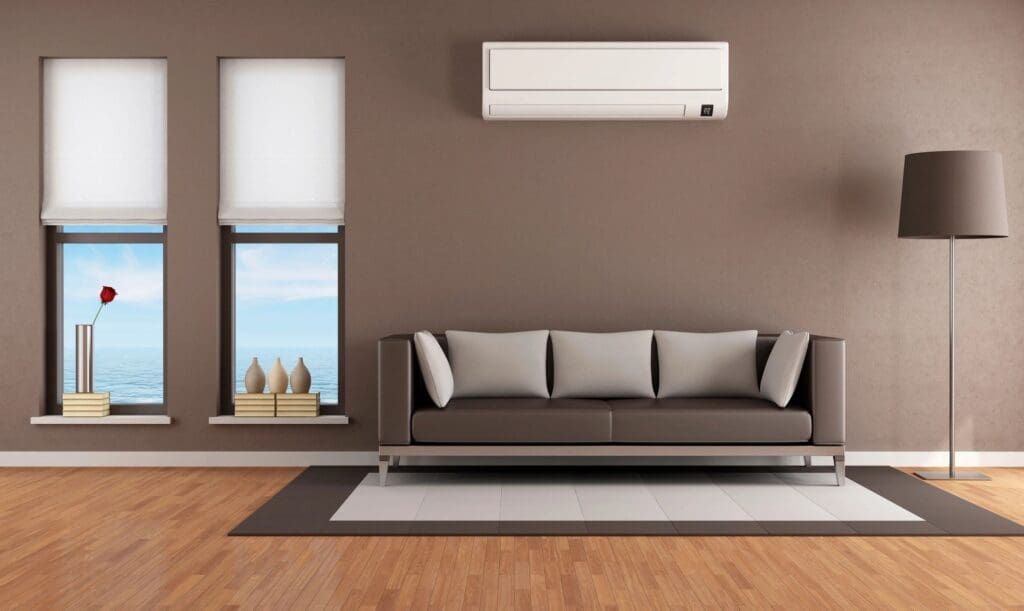
Top 5 Thermal Efficiency Mistakes in Tasmanian Households
Pssstt…The moral of this story is to seek HEG expert advice first!
If your house has cold rooms, high power bills, window condensation and/or poor air quality, then contact Home Efficiency Group BEFORE you expend funds on thermal efficiency solutions. Receive free expert advice, learn about relevant government subsidies or promotions, and let us assist you in prioritising those solutions which will have the most impact. Using the vast experience of our team of HEG Residential Energy Consultants, here is our Top 5 list of Pitfalls to Avoid, as well as suggestions for alternatives.
[1] Don’t put heat pumps in hallways
“We’ll just put a heat pump on the wall at the end of the hallway so that the heat goes into the bedrooms”
— Common customer assumption
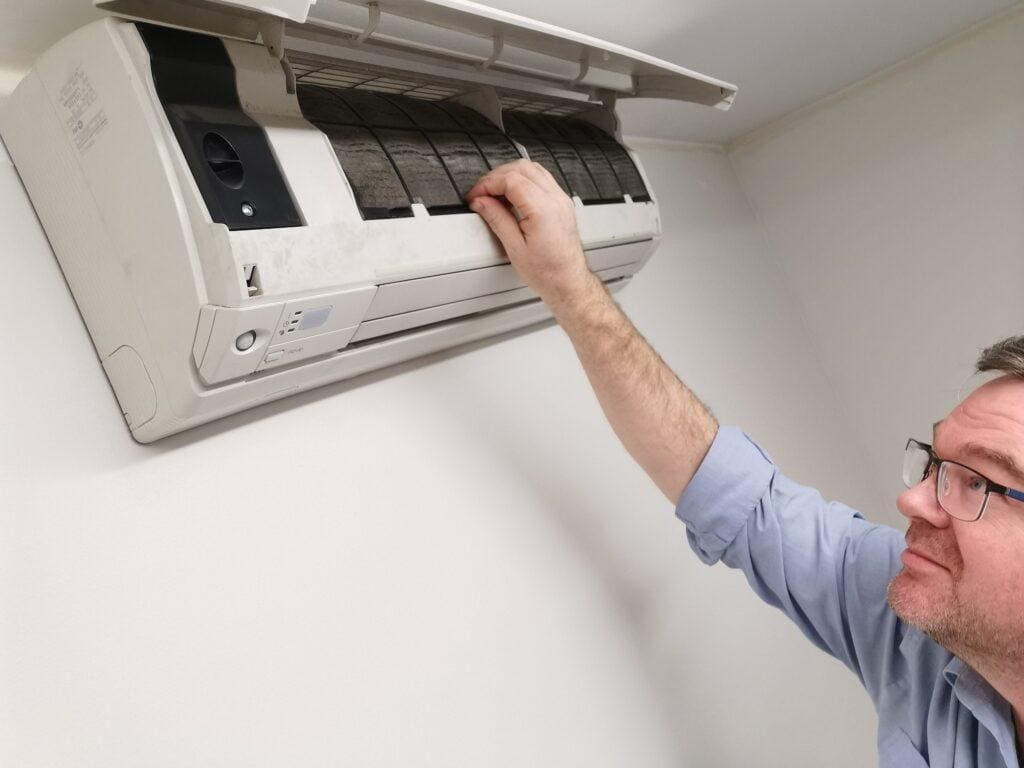
Heat pumps in narrow hallways are too confined – they are designed to heat or cool larger volumes of air, and their thermostats get confused.
Arghhh – no – $2000+ wasted! We have literally seen hundreds of disused heat pumps in narrow hallways during our inspections. They get used for a few weeks, then they are switched off when the householder realises that they don’t warm up the bedrooms, and they don’t operate very efficiently in constricted spaces.
When heat is generated in a confined area by a heat pump, then something called “thermal feedback” occurs, which is where the onboard thermostatic sensor is continually triggered. The heat pump thinks it has achieved the desired temperature prematurely and so switches itself on and off in relatively quick succession, which is inefficient. This is combined with the fact that the heat tends not to travel through the bedroom doors from the hallway very effectively (especially with higher-ceiling residences).
Alternatives to heat pumps in narrow hallways include:
- Ducted Air Circulation Systems, which take the heat from your living room heater and transfer it directly into the back half of each bedroom.
- Ducted Heat Pumps – this provides central heating for a house, and can be zoned to turn sections of the house on or off.
- Multi-split heat pumps – a single outside unit and multiple inside heat pump “head” units (usually 3 or 4) in each bedroom, providing individual temperature control.
If you’ve already installed a heat pump in a hallway, we may be able to install a localised ducted air transfer system to distribute heat from the hall into surrounding bedrooms, even when the doors are closed.
[2] Don’t make rooftop solar your FIRST residential energy investment!
“Our winter power bills are really high… We better install solar panels!”
— Soooo many people, all the time

This is so, so, so common to hear! Whilst solar is a fantastic investment (and we install hundreds each year), you should be aware that it is way more cost effective to save energy rather than have an inefficient house that uses solar power to offset needlessly high power bills.
Let’s break down the high power bill scenario logically, and look at various considerations:
- If you have high power bills in winter, then it’s usually because of electric-based heating costs.
- Heaters are used mostly at night time, and rooftop solar only generates power when bright sun is shining on it during the day.
- Solar panels don’t keep your house warmer, but energy savings measures – especially insulation – do!
Things to do BEFORE looking at rooftop solar:
- Identify what’s causing the high power bills in the first place and address the specific cause. If it is an inefficient heater, such as a Pureheat or IXL radiant heater, then consider using an efficient reverse cycle air conditioner / heat pump.
- Look at the basic thermal efficiency solutions first e.g. top-up ceiling insulation, add underfloor insulation, replace inefficient downlights with insulation-rated LED downlights, use a ducted circulation system to distribute heat so you don’t need panel heaters in bedrooms.
[3] Double glazing isn’t the answer to eradicate window condensation
“We’ve just spent mega bucks on double glazing to get rid of our window condensation, but we still get it on the window frames, and on the windows that we couldn’t afford to double glaze”
— One of the most common comments our HEG in-home assessors hear
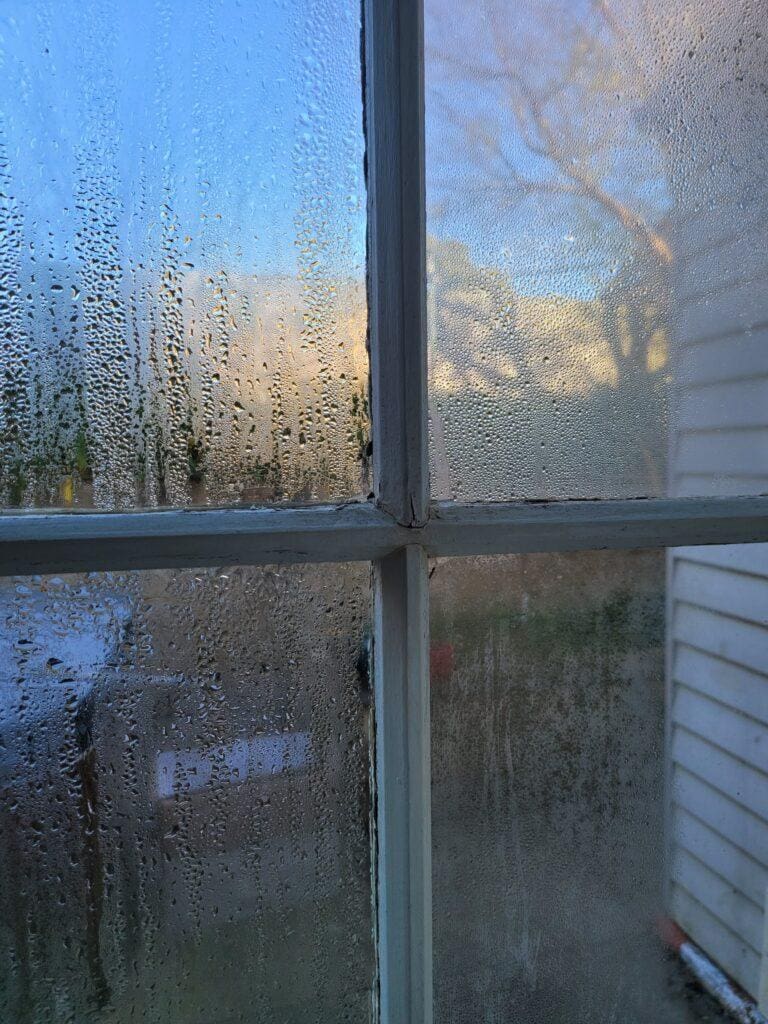
Window condensation can be easily treated by using a number of cost-effective solutions… people often think they need to have expensive double glazing installed to get rid of window condensation, which isn’t accurate
A lot of customers believed that double glazing is the only answer to get rid of window condensation, but there are much simpler, healthier and cost-effective ways to do so that are GUARANTEED to eradicate window condensation.
Treating window condensation is a speciality of ours – we use a combination of products to treat the root causes of the condensation, not just mask the issue. Here are some of the things that we need to know when formulating a custom recommendation for your household:
- HEG analyses the severity of your window condensation to determine the best course of action. We need to know if it is on every window in the house, or just some? Is all of the window covered by window condensation, or only a portion? Which months of the year is it appearing? Is the window condensation presenting itself as light misting, larger droplets or streaking/crying windows?
- Every house is different in terms of internal air volume, householder habits (showering frequency, cooking, drying clothes internally etc), house characteristics (levels of insulation, for instance) and number of occupants. All of these have an impact on how the window condensation issue should be treated.
Getting rid of window condensation in a house is an everyday occurrence for HEG. The solution involves increasing the overnight ambient temperature (insulation, ducted air circulation systems, heat pumps etc) and then ensuring that the home has adequate ventilation (heat recovery ventilators, ducted ventilation modules, etc). This is all done at a fraction of the price of double glazing.
HEG offers a written 3-year guarantee that we will eradicate your persistent, troublesome window condensation, and we’re very good at what we do. If you have window condensation, please contact us for advice before forking out $25k to $50k for double glazing that may not even fix the issue.
[4] Choose “heat pump hot water”, not “solar hot water” in Tasmania
Solar hot water – typically evacuated tube hot water systems – are not as effective in Tasmania as heat pump hot water systems, particularly during winter.
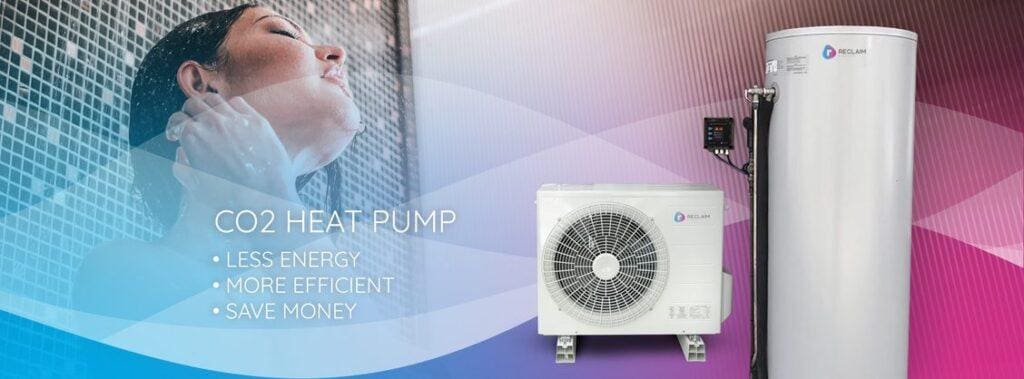
Reclaim Energy Heat Pump Hot Water using CO2 refrigerant – an example of a split system HPHW.
What are heat pump hot water systems? Whilst regular electricity-based hot water cylinders use a resistive element to heat their water – think of a big electric kettle – the HPHW cylinders rely on the technology from “air conditioning” compressors to harvest heat from the ambient temperature in the air, then transfer that via high-surface-area piping to a water cylinder. The air-to-water compressor is a unit that can sit on top of a water cylinder (called an all-in-one HPHW unit) or can be split into a separate unit connected via piping to the cylinder (called a split-system HPHW, pictured).
These are the reasons why we believe heat pump hot water units make a compelling case for Tasmanian homes:
- Heat Pump hot water systems are much cheaper to install than most solar hot water systems, government solar financial incentives still apply to them, they generate hot water 24/7 (i.e. yes – at night!) and are essentially maintenance-free.
- Solar hot water systems look aesthetically awkward on a roof, and they commonly create shadows that could otherwise be used for electricity-producing rooftop solar panels.
- Heat Pump Hot Water systems are super flexible – they can either be a neat “all-in-one” unit, or they can have a split system (similar to a heat pump), whereby the water tank can be inside or outside, and the outside compressor unit can be mounted on the ground, wall or roof of a house.
- Solar hot water still relies on the use of an electric element as a back-up due to the poor sunlight conditions that Tasmania often experiences (like in 2021!).
- Heat Pump Hot Water systems use 65% to 80% less power than an electric hot water cylinder of the same size, and many can be programmed to optimise efficiency with peak solar generation times and time-of-use electricity tariffs.
[5] Give your heat pump compressor some breathing room
“I think the compressor would look best tucked under the back stairs on the complete opposite side of the house, behind the plants”
— Usually the first idea that springs to mind is to hide the outside unit of a heat pump
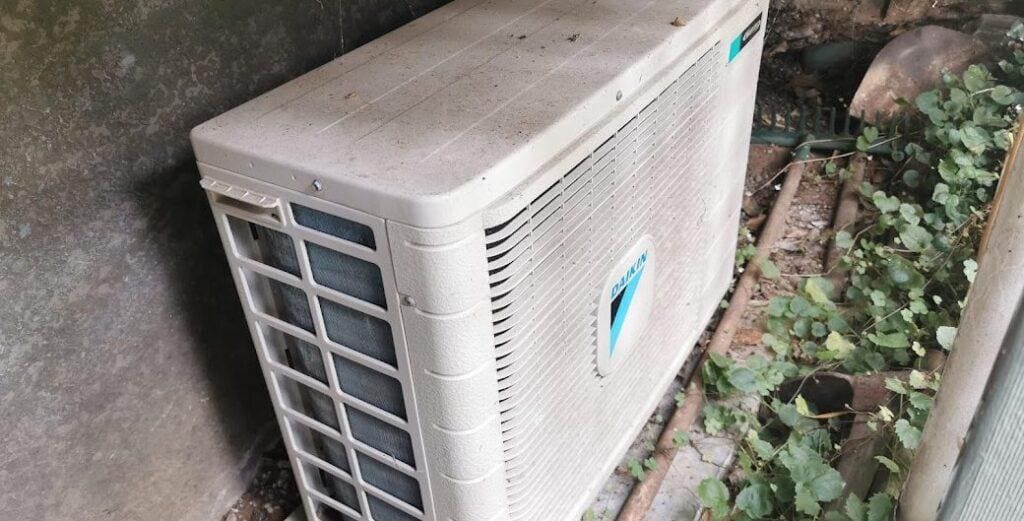
Heat pump compressor unit, positioned under stairs with poor air flow
At HEG, we like to talk frankly about the location the outside unit of a heat pump because it can have a significant affect on system performance and, hence, your comfort levels. When visiting homes, HEG consultants are often perplexed to see outside units in positions that aren’t conducive to optimal operation, so we like to explain why we recommend certain locations.
Irrespective of the style of heat pump, they all have an outside unit, often referred to as the “compressor” (see pictured, above). When a compressor is installed in cramped conditions that don’t have access to a consistent fresh flow of air, this will often lead them to go into “Defrost Mode” more regularly than they should, and your comfort levels will decrease.
What is Defrost Mode? Due to cold temperatures outside during winter, and the compressor extracting heat from the surrounding air, ice can form on the metal fins & coils of the compressor. When this ice build-up is detected, the heat pump system stops normal heating operations, then re-directs heat to the outside unit in an attempt to defrost it. With most makes and models, this process takes 15 minutes, at which point the heat pump attempts to start normal operations again. If there is still ice on the fins, then another 15 minutes will be allocated to defrosting the outside unit, and so on…
The major efficiency considerations for the placement of the compressor of a heat pump include the following:
- Make sure the compressor isn’t too hidden away – like under stairs surrounded by firewood, behind excessive vegetation, or too close to a fence or rubbish bins – as this will restrict air flow, and hence reduce performance.
- The further away the outside compressor unit is from the inside unit, the less efficiently the heat pump operates, and the more it costs to install due to more materials and labour. The most effective installation is a “back-to-back” configuration, where the outside unit is within 2.5m of the inside unit.
These tips are subject to copyright of Home Efficiency Group, and may not be reproduced without permission.
